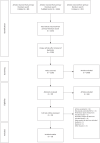Efficacy and safety of lamotrigine in the treatment of bipolar disorder across the lifespan: a systematic review
- PMID: 34646439
- PMCID: PMC8504232
- DOI: 10.1177/20451253211045870
Efficacy and safety of lamotrigine in the treatment of bipolar disorder across the lifespan: a systematic review
Abstract
Background: Bipolar disorder (BD) is a cyclic mood disorder characterised by alternating episodes of mania/hypomania and depression interspersed with euthymic periods. Lamotrigine (LTG) demonstrated some mood improvement in patients treated for epilepsy, leading to clinical studies in patients with BD and its eventual introduction as maintenance therapy for the prevention of depressive relapse in euthymic patients. Most current clinical guidelines include LTG as a recommended treatment option for the maintenance phase in adult BD, consistent with its global licencing status.
Aims: To review the evidence for the efficacy and safety of LTG in the treatment of all phases of BD.
Methods: PubMed was searched for double-blind, randomised, placebo-controlled trials using the keywords: LTG, Lamictal, 'bipolar disorder', 'bipolar affective disorder', 'bipolar I', 'bipolar II', cyclothymia, mania, manic, depression, depressive, 'randomised controlled trial', 'randomised trial', RCT and 'placebo-controlled' and corresponding MeSH terms. Eligible articles published in English were reviewed.
Results: Thirteen studies were identified. The strongest evidence supports utility in the prevention of recurrence and relapse, particularly depressive relapse, in stabilised patients. Some evidence suggests efficacy in acute bipolar depression, but findings are inconsistent. There is little or no strong evidence in support of efficacy in acute mania, unipolar depression, or rapid-cycling BD. Few controlled trials have evaluated LTG in bipolar II or in paediatric patients. Indications for safety, tolerability and patient acceptability are relatively favourable, provided there is slow dose escalation to reduce the probability of skin rash.
Conclusion: On the balance of efficacy and tolerability, LTG might be considered a first-line drug for BD, except for acute manic episodes or where rapid symptom control is required. In terms of efficacy alone, however, the evidence favours other medications.
Keywords: bipolar disorder; cyclothymia; depression; lamotrigine; mania; mood stabilisation; rapid cycling.
© The Author(s), 2021.
Conflict of interest statement
Conflict of interest statement: The authors declared no potential conflicts of interest with respect to the research, authorship and/or publication of this article.
References
-
- Goodwin FK, Jamison KR. Manic-depressive illness: bipolar disorders and recurrent depression. Oxford: Oxford University Press, 2007.
-
- World Health Organization. International statistical classification of diseases and related health problems (10th revision). 2nd ed. 2010, https://icd.who.int/browse10/
-
- American Psychiatric Association. Diagnostic and statistical manual of mental disorders fourth edition (DSM-IV). 4th ed. Washington, DC: American Psychiatric Association, 2000.
-
- American Psychiatric Association. Diagnostic and statistical manual of mental disorders fifth edition (DSM-5). 5th ed. Washington, DC: American Psychiatric Association, 2013.
-
- Phillips M. Dysthymia and cyclothymia in ICD-11. World Psychiatry 2012; 11: 53–58.
Publication types
LinkOut - more resources
Full Text Sources


